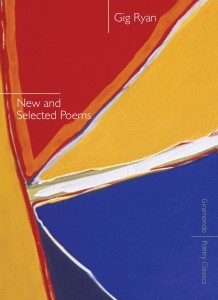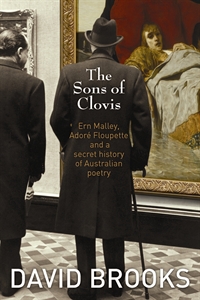Christopher Phelps reviews “Satori Blues” by Cyril Wong
by Cyril Wong
Softblow Press, 2011
ISBN 9789810873615
Reviewed by CHRISTOPHER PHELPS
Phrasally, “satori blues” is a sort of tonal totality that balances enlightenment with catharsis, high with low, insight with outsight. Blue is a color, as well as a state of mind. Satori is an inner lens, as well as the light it focuses. And satori is a bright word, while blues are naturally noctilucent. Cyril Wong’s Satori Blues is a book-length poem that sites the sights it cites, in sound—that concentrates balance, straddles its own meditations, follows its own suggestions, and lodges everything quietly between loud vowels.
The poem begins with five lines that set the table smartly and neatly. We know we’re about to sit, Socratically, at a philosophical love poem:
The way is every place. Love appears
as nothing when we begin to know it,
nothing that is not its opposite, or
whatever opposites mean, in this case—
coming and ebbing, a kiss and heartache.
By a slow collision—spaced by a full stop—the Dao hits love head-on when love “appears” (apt, as a ball in Piaget). Love appears as the nothing we know, then a suddenly new nothing, a kind of koan that characterizes or defines “nothing” (and anything that might partake of nothing): “nothing that is not its opposite,” a key and chord unlocking echoes in all that follows. Nothing that is not its opposite: Doubling the negation back positive, everything is its opposite—nothing’s opposite, and love’s nothing’s opposite—because it is nothing: because every something stands, across the line of existence, as nothing’s opposite; opposed to nothing. “Whatever opposites mean, in this case,” and a dash to say, perhaps more. In any case, the heart’s case of ache is clearest (apt, as an arhat’s bell): what comes ebbs as what kisses finish.
The next ten lines are just as preponderant:
The place where no love waits
is also love. Legs uncrossed, benumbed
but tender, tenderly. Gratified when answers
rose up in a field without questions.
Eyelids lifted like hoods or wings,
then a mise en abîme of eyes
flying open, endless hoods and wings.
Still, a moment’s suspicion that existence
churns on without a doubt, without
significance or beauty. […]
The first course comes as a lyrical feast! Indelicate legs, numbed, but this no-love is also love. One wonders if this statement is also a question—just before the speaker’s address shifts to a past when answers outgrew or precluded questions. Or perhaps the address doesn’t shift; it just illuminates where we’d already been. A flash of love or sex or both that had tasted infinity (or the abyss, which in this French expression connotes the same): This is difficult territory to balance, without falling into sentimentality on the one side, or declaimed but swollen importance on the other. Wong avoids both traps on his path, in his way. Rather than hitting us with a new image, he fledges the same flesh: “hoods or wings” becomes “hoods and wings.” And just as well, by sound alone, “without a doubt” echoes (and countersamples) “mise en abîme”—angel food meets earth salt. Finally, it is not eyes that lifted, but merely their lids. Enlightenment begins with a lift; eyes open on the scene before looking up toward exaltation. Then how long does it last—is it really only a moment’s suspicion (as brief as love or sex) that existence churns on without significance or beauty?
In the coming pages, we discover how the mouth feels mulling that question. Wong’s lyrics turn prose-poetic, and to mentors (like Jiddu Krishnamurti and Shunryu Suzuki), in an effort to challenge the song to find its melody, its prosody, its probity, its self-questioned lack of lack:
until the body registers its extremities again—
almost everything lost but that airy room
of memory. That one expansive room.
All knowledge is but a raft—zoom up
and out—on a sea of the unknown.
The poet focused on the nail-biting void
when a whole rainbow of interpretations
was always nearby. Leaning into air, uncertain
what air is; the body knows, inhaling
its secrets—air is everything we do.
Inhale and that radio is a death-trap,
melancholy unraveling this morning’s calm;
exhale, at last, and melodies are notes
arranged to mimic fissures in a life. Love
has no opposites, after all. How alarming
the impossibility, when reconsidered.
[…]
What have I been saying? Fire, windows,
thought, repetition, hardness and love. […]
[…]
[…] After immolation, the monk’s heart
stayed intact and was displayed as a relic.
The trouble with things is that we believe
they are ideas made permanent—
bed to my bed, cheek to my cheek.
Love’s nothing having turned into something (capable, despite itself, of opposites), soon the poem turns strikingly into the world we recognize as contemporary. We know the brands of this food (the trans fat, the tribulations):
[…] The revelation stayed
long after the high was gone, that there
is a way to observe each chiseled body
as something foreign or terrifyingly
new. I took part in the orgy, but instead
of being ploughed by lust, I wanted
all of you to abandon self-hatred
for joy. Sometimes love is unfulfilled
vanity: touch me, hold me, fuck me.
He kept checking his iPhone to see if
there was another party in the other room.
Since nothing lasts, let’s rehearse
by saying farewell to this bed;
these curtains that kept nakedness
from view; not forgetting you, you and you.
Here “nothing” changes its play, gestalting between a solid-not and a not-solid, between noun and negation. And starting at “new,” that long u is the sound of a sieve for what is already lost in what is found anew, finishing where that second pronoun—at once singular and plural—repeats, for emphasis, a you that hardly matters which; for want, perhaps, of a you who could bear such emphasis.
Wong’s long u continues for another three pages, catching on “do,” eye-rhyming with “go,” then swan-singing (“To experience means to go / through”) back to “you”:
Stop swinging and the world swings
like a gate into you; the trick
is to move with the gate. […]
And here he does, by a brilliant stroke of sound, in the key of long a:
Rocks and shells have nothing to say?
Why not pay attention anyway?
I think Shunryu Suzuki was trying to explain
that you are that which is sound.
[…]
Wind chimes urged us into a sudden
state of knowing. After saying the word
Buddha, the monk rinsed his mouth
three times. An earthquake between
idea and reality. […]
[…]
Look away and the way is everywhere.
Is this line the main course, the great way, the Mahayana? If it is, it’s handsome to the eye and pleasing to the tongue.
What follows is a medley, salads and cheeses:
Forgive the past for repeating for it knows
not what it does. No one truly vanishes,
which is the root of every crisis. […]
[…]
[…] The difficulty of entering
the oasis of a familiar tree, the sky as sky.
We impose our straight lines upon nature
which is squiggly. Alan Watts describes
Euclid as possessing a weakened intellect
for his simplistic geometrical shapes.
String theorists themselves cannot agree
on which theory best describes
the universe. U.G. apologized for having
“no teaching here, just disjointed, disconnected
sentences.” And emphasized, “There is
nothing to understand.” If you must burn,
burn away every preconception and see
what happens. […]
How our best efforts to straighten order fail; to floss before we’re finished? If science has remade the world, we remain to see it happen?—to note its presumptuousness and notch our own? Wittgenstein’s first proposition in his Tractatus is statically translated as “The world is all that is the case,” and more loosely if dynamically as “The world is what happens.”
Wong continues to retune his examples now; he resets the table with his pastiche-in-progress, using both long u’s and the air from “everywhere”:
[…] Deep breath now,
deeper, even deeper still. Your heart
sails to that old woman pushing her cart,
but what can you do to lift her burden?
To store the present: use, reuse,
abuse; compare, repair, despair.
[…so—in a…]
Don’t overrate your holiness!
Put down the prayer book and gaze
upon your innermost want without shrinking.
Listen, why won’t you listen
to everything that I have to say?
If this is dessert—come early—it’s delicious in its pleading, and in its bittersweet desperation, and in how its self-knowledge self-overhears:
The molester who was arrested had
asked victims to place their hands
on his chest to “feel” his heart.
The hardest part is admitting that no wrong
has been committed. Thank you
for loving me in spite of yourself.
And you wonder anew (all) who “you” is. Then which “I”s:
[…] Eyes saw the leaf
because of that light, but light and leaf
were possible because of the eyes.
Push or pull, the wheel doesn’t stop turning.
What sound does the ego make upon departing?
Soon to these portals’ port! This brandy’s wine:
The dream of a harmonious world
is the reason that I’m always on fire.
Love is not enough when the self
adheres to its core. What I cannot
retrieve mocks me from behind time’s
two-way mirror. […]
[…]
me; no time; no time to waste!
[…]
What we talk about when we talk about loss
are the catastrophes: walls collapsing
and the terrible flood. What we forget is what
we fail to detect: the line opening like an eye
from one end of a dam to another;
a startled look and the averted vision
at a wrong word at yet another wrong time.
The lids that once lifted singularize into an eye that has both glimpsed and glared. Emerson said that the glance reveals what the gaze obscures. One wonders if he was wrong to choose sides…
Near the poem’s final agon, in the midst of a Whitmanic flourish, Wong asks and answers:
Who says we cannot compartmentalise
heartbreak, break it open and employ
its parts?
[…]
Stars faint from lack, freefalling into
deep graves of themselves, from which
no light may lean away. The future
revealed like an afterlife, which we fight
to occupy and exit with equal
courage and delight. […]
Suddenly, finally, black holes appear as one-way mirrors, anti-beacons: eyes so hungry for light, they take it all. The reciprocal romance of a mise en abîme singularizes into a solitary trap we must acknowledge if we’re to survive with light left in us. Eyes heard, symmetries both broken and reformed, the book ends, a few lines later, with Cyril Wong’s challenge and charge to sing along.
CHRISTOPHER PHELPS originally studied science and philosophy before falling in love with the oldest version of both. His poems appear in The Awl, Meridian, The New Republic, PANK, and in the anthology Collective Brightness: LGBTIQ Poets on Faith, Religion & Spirituality. He works in a small acrylic-sculpture workshop in Venice, Florida.








